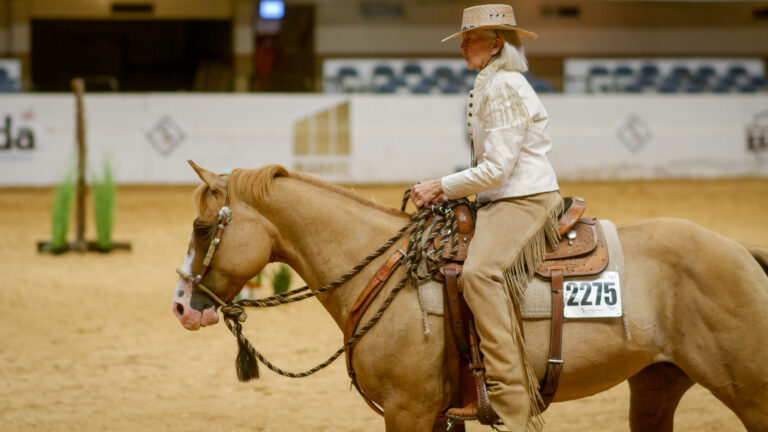
[Whoa, there! Want a quick refresher before you take the Trivia Challenge? Check here for equine conformation basics.]
1. True or false: If a horse is taller at his hips than at his withers, he’ll be better able to reach up underneath himself for powerful hind-end propulsion.
T / F
2. If you split a horse into thirds, with vertical dividing lines at his shoulder and his hip, then ideally
A) his middle section should be longer than his two end sections.
B) his hip section should be longer than his front and middle sections.
C) all three sections should be about the same length.
3. True or false: A horse’s shoulder should slope at about a 45-degree angle in relation to the ground.
T / F
4. The term ‘post legs’ refers to insufficient angulation in which joints?
A) the stifles
B) the hocks
C) the knees
HOW’D YOU DO? (Answers below.)
1. F is correct. If a horse’s hips are higher than his withers, his weight tends to shift forward, resulting in a front-heavier stride and less efficient hind-end propulsion. (But here’s help for developing more drive-from-behind and self-carriage.)
2. C is correct. A horse with good conformational balance has roughly equal length in all three body sections. Such a horse performs well and is pleasing to the horseman’s eye. (You be the judge—evaluate the conformation of these three young mares.)
3. T is correct. The ideal equine shoulder is long and sloping at about a 45-degree angle to the ground. This shoulder conformation contributes to a long, smooth stride. (Improve control over your horse’s shoulders with this corner-sharpening exercise.)
4. C is correct. The term “post legs” refers to a too-open angle in the hock joint. This predisposes a horse to osteoarthritis and places strain on the hocks and stifle joints. (Learn how to pinpoint leg lameness.)
Hey! Not already receiving H&R’s fun and informative newsletter? Sign up for The Ride.






